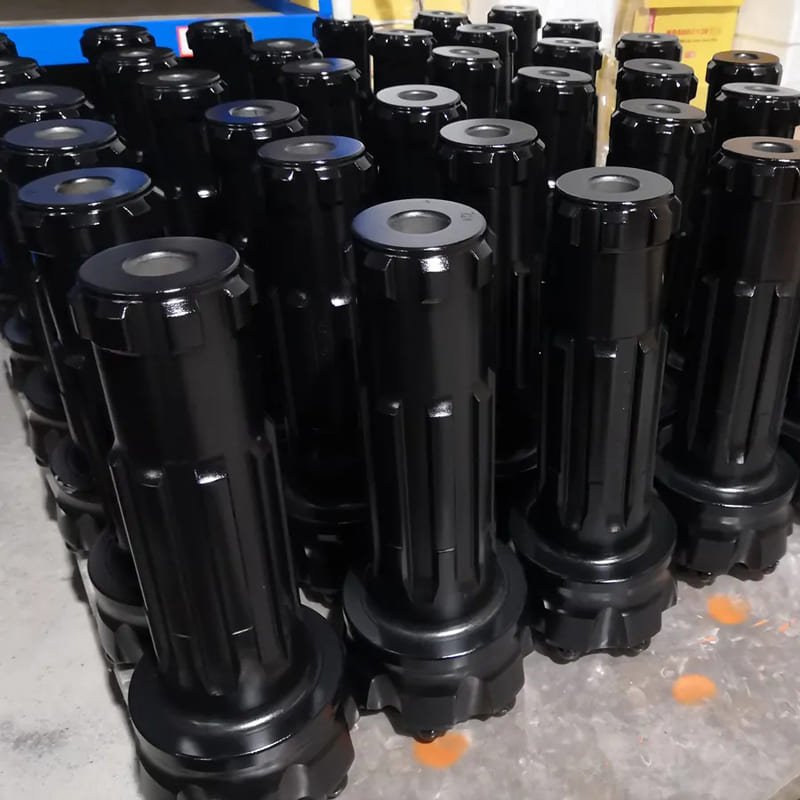Watching drilling work at a site shows the importance of Down-the-Hole (DTH) drill bits. These tools really determine the success or failure of a project. Detecting gauge wear is crucial. It is like finding a tiny crack in a dam. This step is vital to maintain the flow.
Check gauge wear in DTH drill bits by doing regular visual checks. Measure the bit diameter and compare it to the original specifications. Look for signs like a smaller hole diameter and more vibration. Regularly collect feedback from your drilling teams on the tool's performance.
Vigilance is really important based on my experience. Visual inspections serve as your first defense line. Measuring the bit’s diameter around the gauge regularly helps spot wear early. Watching performance signs like unexpected vibrations might show hidden problems. Drilling teams often tell me about concerns before they grow bigger. They allow us to react quickly. Let's look deeper into each method and find practical ways to keep our drill bits working well.
Visual inspections are crucial for identifying gauge wear.True
Regular visual inspections help detect early signs of gauge wear in DTH drill bits, ensuring optimal performance.
Increased vibration indicates no gauge wear in drill bits.False
Increased vibration often signifies gauge wear, affecting drilling efficiency and accuracy.
What Are the Key Signs of Gauge Wear in DTH Drill Bits?
Have you ever felt a bit worried when your drilling does not go smoothly? I’ve experienced that too. Gauge wear in DTH drill bits frequently causes problems. Pay attention to the signs you should notice.
Key signs of wear in DTH drill bits show in various ways. Diameter reduces noticeably. Gauge buttons display visible damage. Vibration increases during drilling. Keeping the hole straight becomes hard. Drilling takes much longer time.
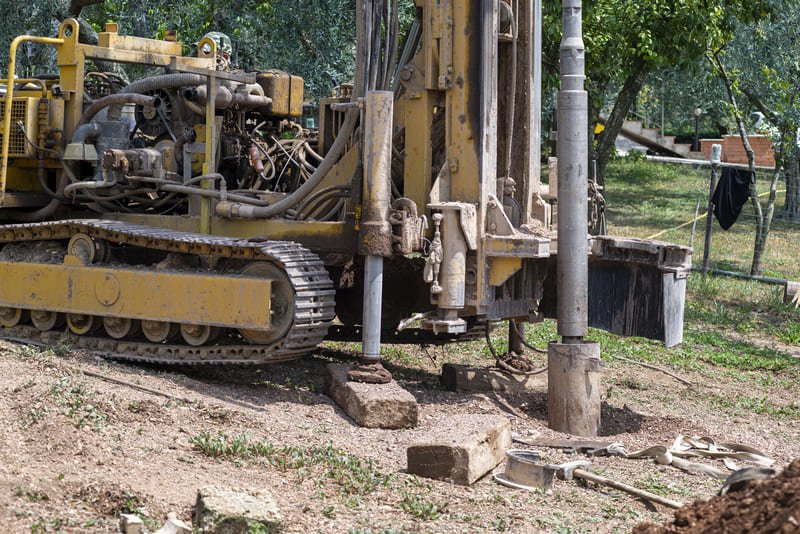
1. Visual Inspection
Conducting a visual inspection is the first step in identifying gauge wear in DTH drill bits. Regularly measuring the diameter of the drill bit is essential. This measurement should focus on the gauge, which is the outermost part of the bit. When compared to original specifications, a noticeable reduction in diameter indicates gauge wear.
Signs to Look For:
- Diameter Comparison: I use calipers to often check if the diameter stays the same as the original. Any noticeable decrease clearly shows gauge wear.
- Surface Examination: I examine gauge buttons for damage. Excessive wear or flattened buttons mean it’s time for action. Missing or broken buttons? That's definitely a problem.
2. Performance Indicators
The performance of drilling tells a lot about equipment condition, and recognizing performance indicators is critical for timely maintenance.
| Indicator | Description |
|---|---|
| Hole Diameter Reduction | Undersized holes suggest that the gauge portion of the bit is worn and may lead to operational issues. |
| Increased Vibration | An unbalanced drill bit due to excessive wear can cause vibrations, affecting both efficiency and equipment longevity. |
| Flat Width Measurement | If the flat width on any gauge button exceeds 25-33% of the button diameter, it’s time for regrinding or replacement. |
| Binding Symptoms | Difficulty in drilling due to binding often indicates that worn buttons are failing to maintain clearance. |
3. Operational Feedback
Listening to operators always helps; their experiences give valuable insights based on their experiences while using DTH drill bits. Here are key feedback indicators that point to gauge wear:
- Maintaining Hole Straightness: Difficulty in keeping the borehole straight often signals uneven gauge wear.
- Increased Drilling Time: Sudden increase in drilling times usually indicates gauge wear affecting efficiency. This may lead to higher costs.
4. Tool Examination
Regular checks are now part of our routine, and scheduled maintenance can prevent unexpected failures due to gauge wear:
- Scheduled Maintenance: We routinely check the gauges using specialized measuring tools for precise results.
- Comparison with New Bits: Comparing old bits with new ones helps quickly spot wear patterns, allowing for timely replacements.
5. Documentation and Tracking
Keeping records has been really crucial for us:
- Bit Usage Records: Recording types of rock, penetration rates, and changes in performance helps predict wear patterns and plan maintenance effectively.
- Analysis of Worn Bits: Studying retired bits has given insights into wear patterns, helping adjust future drilling parameters. Learn more about bit analysis1.
By staying cautious and watching these signs closely, operators can enhance the longevity and effectiveness of their drilling operations. Taking proactive steps has saved time and reduced costs greatly.
Visual inspection is crucial for detecting gauge wear.True
Regular visual inspections help identify diameter reduction and surface damage in DTH drill bits, ensuring timely maintenance and operational efficiency.
Increased vibration indicates gauge wear in drill bits.True
Excessive wear can unbalance drill bits, causing increased vibrations that affect drilling performance and equipment longevity.
How Often Should You Inspect DTH Drill Bits for Wear?
Ever discovered during a drilling job that your DTH drill bits wear out faster than expected? I've experienced it too and it costs a lot. Let's probably figure out how often we should really check these important tools!
Check DTH drill bits every 100 hours of use or at least once a month. Pay attention to the diameter. Notice any visible damage. Look at the hole to see if the size stays the same. Increased vibration might show wear. This needs quick attention. Very quick.

Understanding DTH Drill Bit Wear
Checking DTH drill bits is about keeping your work safe and running well. Regular checks prevent delays and save money. I found this out the hard way. A good rule of thumb is to conduct inspections every 100 drilling hours or once a month, whichever comes first. This helps find problems early so projects stay smooth and equipment works well.
Key Indicators of Wear
When checking DTH drill bits, look for several key indicators of wear:
| Indicator | What to Look For | Action Required |
|---|---|---|
| Diameter Reduction | Measure the diameter against original specifications | Regrind or replace the bit |
| Visible Damage | Check for broken or flattened gauge buttons | Immediate replacement needed |
| Hole Diameter Consistency | Ensure holes drilled are to specification | Adjust drilling parameters |
| Increased Vibration | Noticeable vibrations during drilling | Inspect bit and regrind |
For more details on finding wear, check this resource2.
Frequency of Inspections
Inspection frequency depends on a few factors:
- Type of Material Drilled: Harder materials wear bits quicker.
- Drilling Conditions: High temperatures and pressure increase wear.
- Operational Practices: Aggressive drilling means more checks are needed.
I always document each inspection. Detailed records predict wear patterns and allow regular maintenance. This is very crucial. Learn more about tracking in our tracking guide3.
Maintenance Schedules
Inspection routines in my maintenance schedule have really improved things. Here’s my advice:
- Before Each Job: A quick look finds immediate problems.
- Mid-Job: If performance drops, inspect thoroughly.
- Post-Job: After tough work, I always check wear and plan next steps.
For more details, see our maintenance checklist4.
Operational Feedback Mechanism
Drill operators give feedback on bit performance. Important indicators include:
- Difficulty Maintaining Straightness
- Increased Drilling Time
These insights help improve our maintenance strategy and overall efficiency. Learn about feedback systems in this guide5.
Regular inspections have kept operations smooth and avoided big costs. Staying proactive is key!
DTH drill bits should be inspected every 100 drilling hours.True
Regular inspections every 100 hours help maintain DTH drill bit performance and longevity.
Visual damage on drill bits requires immediate replacement.True
Visible damage indicates significant wear, necessitating immediate action to ensure drilling efficiency.
What Tools Are Best for Measuring Gauge Wear?
Did you ever find yourself in a spot where a quick measurement saved you time and resources? Knowing the right tools for checking gauge wear is very important for smooth drilling work. Let's explore the choices together!
Measure gauge wear effectively using calipers, micrometers, special wear gauges and performance monitoring systems. Each tool offers unique benefits. These benefits improve measurement accuracy. They also increase operational efficiency.
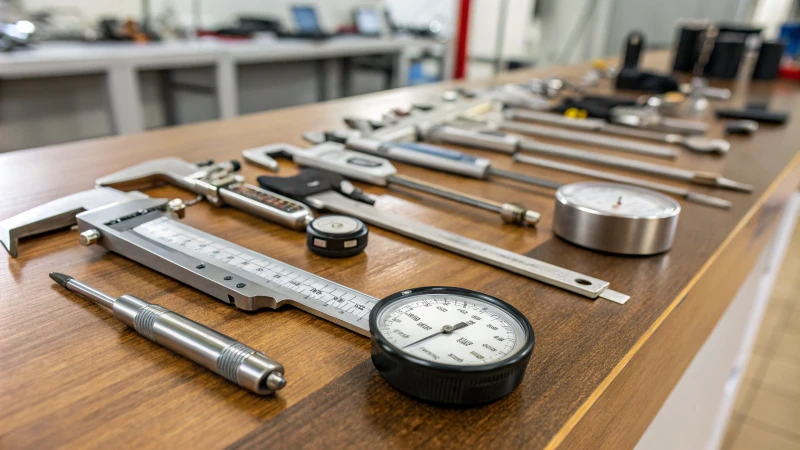
Overview of Tools for Measuring Gauge Wear
Measuring gauge wear is important for drilling efficiency. During my work, I discovered different tools that fit specific needs, from basic measurements to advanced monitoring systems.
1. Calipers
Calipers are excellent for accurate gauge wear measurements. These tools are really flexible and can measure the outer diameter of drill bits precisely.
| Type of Caliper | Range | Accuracy | Use Case |
|---|---|---|---|
| Vernier Caliper | 0-150mm | ±0.02mm | General use for small bits |
| Digital Caliper | 0-200mm | ±0.01mm | Easy reading and data logging |
Once, I saw slight changes in our drill bits with a digital caliper. This small detail helped change our approach and avoid major downtime.
2. Micrometers
Micrometers are perfect when extreme accuracy is necessary. They provide more precision than calipers and are great for detailed checks of drill bit gauge wear.
| Type of Micrometer | Measurement Range | Precision | Applications |
|---|---|---|---|
| Outside Micrometer | 0-25mm | ±0.01mm | Bit diameter |
| Depth Micrometer | 0-50mm | ±0.02mm | Depth checks |
Micrometers have helped me catch tiny wear that might turn into bigger troubles later.
3. Specialized Measuring Tools
Several tools specifically measure gauge wear, including:
- Wear Gauges: Simple devices show wear on a bit’s gauge surface directly.
- Laser Measurement Systems: These provide non-contact measurements, reducing wear caused by physical handling.
| Tool Name | Measurement Method | Advantages |
|---|---|---|
| Wear Gauge | Contact | Simple and direct |
| Laser Measuring Tool | Non-contact | Highly accurate and eliminates contact wear |
I often choose laser measuring tools during crucial tasks as they save time and guarantee accuracy without causing extra wear.
4. Performance Monitoring Systems
Technology has revolutionized our operations with performance monitoring systems that track drilling metrics in real-time, alerting us to gauge wear before it becomes critical.
- Data Logging Systems: Automatically record drilling parameters, helping us understand wear patterns over time.
- Smart Sensors: These small devices fit into drilling equipment, offering continuous feedback about gauge conditions.
| System Type | Key Features | Benefits |
|---|---|---|
| Data Logging System | Long-term data storage | Helps predict wear patterns |
| Smart Sensor | Real-time monitoring | Immediate alerts for maintenance needs |
Using these systems has changed how I watch for gauge wear; they reduce downtime and improve drilling efficiency.
Summary of Top Tools for Measuring Gauge Wear
Using calipers, micrometers, specialized tools, and monitoring systems helps maintain top drilling performance while avoiding costly downtime due to gauge wear problems. Explore more about useful tools by reading measuring instruments reviews6.
Calipers are essential for precise gauge wear measurements.True
Calipers provide accurate measurements of drill bit diameters, crucial for monitoring gauge wear effectively.
Laser measurement systems eliminate the need for physical contact.True
These systems offer non-contact measurements, reducing wear caused by handling and enhancing accuracy.
How Does Gauge Wear Impact Drilling Performance?
Faced unexpected delays while drilling? Maybe something is wrong. Gauge wear is probably important. Understanding it really helps keep your work smooth. Operations run efficiently with this knowledge.
Gauge wear greatly affects drilling. It reduces the size of the hole. It also increases vibration and complicates keeping the borehole straight. Regular checks are crucial. Early detection of wear keeps drilling effective.
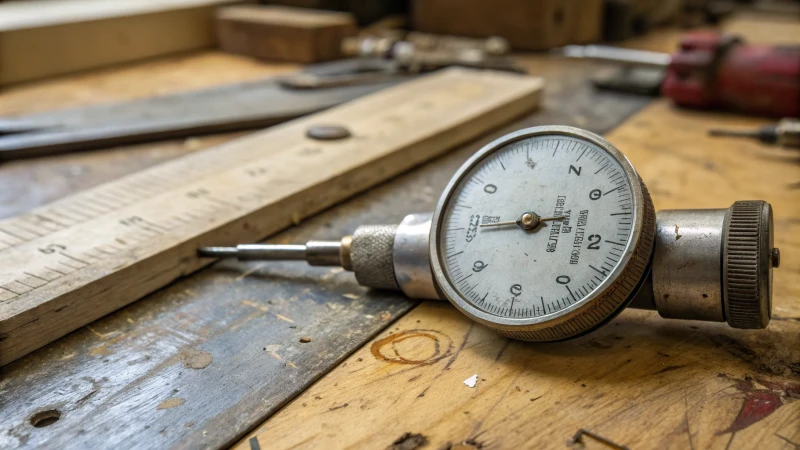
Understanding Gauge Wear
Gauge wear refers to the erosion or degradation of the outer edge of drill bits, specifically in Down-the-Hole (DTH) drilling. It is a critical factor that directly affects drilling performance. When the gauge wears down, it can lead to a variety of issues that hinder effective drilling operations.
For instance, if the gauge diameter reduces, the hole being drilled may become undersized, causing complications in subsequent procedures like casing installation. This can ultimately lead to costly delays and increased operational challenges. Monitoring gauge wear through consistent measurements is essential for maintaining drilling accuracy and efficiency.
Key Performance Indicators Affected by Gauge Wear
-
Hole Diameter Reduction: As gauge wear progresses, operators may notice a decrease in the drilled hole's diameter, which can hinder other operations. This is particularly problematic in oil and gas drilling where precise hole sizes are critical for equipment installation.
Impact Consequences Reduced Hole Diameter Difficulties in equipment fitting Inconsistent Holes Increased chances of operational failure -
Increased Vibration: Excessive gauge wear often results in an unbalanced drill bit, leading to increased vibrations. This not only affects drilling speed but also risks damaging the drill rig. Operators should monitor vibration levels closely and adjust their approach accordingly.
-
Straightness of Borehole: Maintaining a straight borehole is essential for efficient drilling. Gauge wear can result in difficulty keeping the borehole trajectory straight, leading to inefficient drilling paths that may increase costs and time.
Detecting Gauge Wear Early
Identifying gauge wear early can mitigate its impact on drilling performance. Here are some effective strategies:
- Regular Visual Inspections: Conduct routine checks on the drill bits, focusing on physical signs of wear such as flattened buttons or significant diameter reductions.
- Performance Feedback Loops: Gather feedback from operators regarding drilling efficiency and any noticeable changes in performance or time taken to achieve desired depths.
- Documentation and Tracking: Keeping detailed records of bit usage can reveal patterns over time, allowing for proactive maintenance scheduling before wear becomes excessive.
Operational Strategies to Address Gauge Wear
Addressing gauge wear effectively involves several operational strategies:
- Scheduled Maintenance: Implement regular maintenance schedules that include checking for gauge wear and replacing bits when necessary.
- Comparison with New Bits: Periodically compare used bits with new ones to quickly identify wear patterns and make informed decisions regarding replacements.
- Training and Education: Ensure that all team members are trained on identifying signs of gauge wear and understanding its implications for overall drilling performance.
By adopting these strategies, companies can enhance their operational efficiency and reduce costs associated with drilling delays caused by gauge wear. For more detailed analysis, check out resources on drilling performance management7 and preventive maintenance practices8.
Gauge wear can lead to reduced hole diameter during drilling.True
As gauge wear progresses, the diameter of the drilled hole decreases, complicating subsequent operations.
Increased vibrations are caused by excessive gauge wear.True
Excessive gauge wear results in an unbalanced drill bit, leading to higher vibrations during drilling operations.
What Preventive Measures Can Extend the Life of DTH Drill Bits?
DTH drill bits are crucial for successful drilling. They often wear out too soon. Take steps to keep them lasting longer. Regularly inspect the bits for damage. Check for cracks or worn parts. Maintain the bits properly by cleaning them after every use. Use the right lubrication to keep them running smoothly. Store the bits in a dry and safe place. Avoid using them on unsuitable surfaces. Train operators to handle the equipment correctly.
**To prolong the life of DTH drill bits, conduct regular maintenance checks. Use proper handling techniques. Operate in optimal conditions. Train operators comprehensively. Keep detailed performance records. These actions really increase the durability of drilling tools. They improve efficiency over time.
Regular Maintenance Checks
Regularly check your drill bits for maintenance. This task is crucial. Scheduling inspections became a game-changer for me. Focus on assessing wear and tear, particularly
Routine checks help catch small problems early before they turn into major issues. For more information, learn about drilling equipment maintenance.
Proper Handling Techniques
Handling DTH drill bits correctly is vital for their lifespan. Gentle handling really matters. Here are useful practices
Avoid Over-torquing꞉ Too much torque causes premature wear. Always follow the manufacturer's recommended settings.
Gentle Handling꞉ Secure drill bits during transportation. Never drop them to prevent damage.
Correct Storage꞉ Store bits in a dry place, away from moisture and extreme temperatures. Prevent corrosion and degradation. Learn more with best practices for drill bit handling.
Optimal Usage Conditions
Using DTH drill bits in suitable conditions impacts their longevity
Match Bit Type to Material꞉ Choose the right bit for the geological conditions. Using a hard rock bit in soft formations causes rapid wear.
Monitor Drilling Parameters꞉ Watch penetration rates to avoid overheating and excessive wear. Discover more at drilling performance optimization.
Training and Knowledge
Training operators is essential. A well-trained crew makes fewer mistakes, reducing bit damage. Focus on
Understanding Bit Wear Patterns꞉ Teach early signs of wear to take action promptly.
Effective Drilling Techniques꞉ Proper techniques lower wear and extend drill bit life. Explore more at training programs for drilling professionals.
Record Keeping and Analysis
Detailed records of bit usage really help. They track performance and predict wear
Usage Logs꞉ Record material types, penetration rates and any issues.
Performance Analysis꞉ Regularly review data. Identify trends to decide when maintenance or replacement is necessary.
These preventive measures significantly improve the longevity of DTH drill bits. Efficient and cost-effective drilling operations result, minimizing downtime and replacement costs. Keep those bits running strong!
To summarize, proactive steps like regular maintenance, proper handling, optimal conditions, thorough training and meticulous record-keeping can really prolong the life of your DTH drill bits. Achieve smoother and more efficient drilling operations together!
Follow these strategies and watch your drill bits thrive.
Happy drilling!
Want personalized advice? Let’s connect!**
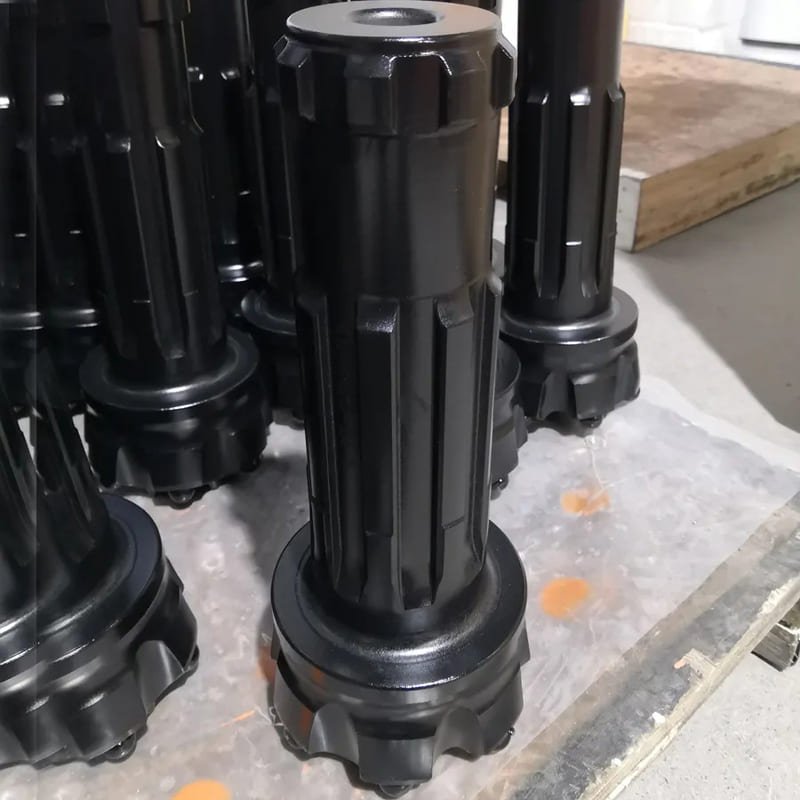
Importance of Maintaining DTH Drill Bits
At the start, I discovered the importance of maintaining DTH drill bits. Proper care really extends their lifespan. Simple preventive actions probably save you many future problems. It's true. A little attention can really help these tools last longer.
Regular Maintenance Checks
Performing regular maintenance checks is essential for ensuring the longevity of DTH drill bits. Operators should schedule inspections to assess wear and tear on the bits, particularly focusing on:
| Maintenance Activity | Frequency | Purpose |
|---|---|---|
| Visual Inspections | Weekly | Identify visible wear signs |
| Dimensional Checks | Monthly | Measure diameter for wear |
| Performance Reviews | After each job | Analyze efficiency and issues |
By conducting these checks, operators can catch potential problems early, allowing for timely maintenance or replacements. You can learn more about drilling equipment maintenance9 that supports effective practices.
Proper Handling Techniques
The way DTH drill bits are handled can significantly affect their lifespan. Here are some best practices:
- Avoid Over-torquing: Excessive torque can lead to premature wear. Always use the manufacturer’s recommended torque settings.
- Gentle Handling: When transporting drill bits, ensure they are well-secured and avoid dropping them, which could cause damage.
- Correct Storage: Store bits in a dry place, away from moisture and extreme temperatures to prevent corrosion and material degradation. For more detailed handling techniques, check out best practices for drill bit handling10.
Optimal Usage Conditions
Using DTH drill bits in suitable conditions can greatly enhance their lifespan:
- Match Bit Type to Material: Ensure the selected bit is appropriate for the geological conditions. Using a hard rock bit in soft formations can lead to rapid wear.
- Monitor Drilling Parameters: Keep an eye on penetration rates and adjust as necessary to avoid overheating and excessive wear. For insights on optimizing drilling parameters, visit drilling performance optimization11.
Training and Knowledge
Investing in training for operators is crucial. A well-trained crew is less likely to make mistakes that lead to bit damage. Topics should include:
- Understanding Bit Wear Patterns: Educating operators on how to identify early signs of wear can prevent further damage.
- Effective Drilling Techniques: Training on proper drilling techniques can help reduce wear and extend the life of the drill bits. Consider exploring training programs for drilling professionals12 to enhance your team's skills.
Record Keeping and Analysis
Maintaining detailed records of bit usage can help track performance and predict wear patterns:
- Usage Logs: Keep logs detailing the type of material drilled, penetration rates, and any issues encountered during operations.
- Performance Analysis: Regularly review the performance data to identify trends that indicate when maintenance or replacement is necessary.
By implementing these preventive measures, operators can significantly extend the life of DTH drill bits, ensuring efficient and cost-effective drilling operations.
Regular maintenance checks can extend DTH drill bit lifespan.True
Conducting inspections helps identify wear early, allowing timely maintenance or replacements, thus prolonging the life of drill bits.
Over-torquing DTH drill bits increases their lifespan.False
Excessive torque leads to premature wear; adhering to recommended settings is crucial for longevity.
Conclusion
Learn effective methods to identify gauge wear in DTH drill bits, ensuring efficient drilling operations through regular inspections and performance monitoring.
-
Explore comprehensive resources on DTH drill bit maintenance to ensure your drilling operations remain efficient. ↩
-
Clicking this link will provide you with expert insights into the best practices for inspecting DTH drill bits, enhancing your equipment management strategies. ↩
-
This link offers detailed documentation techniques for tracking drill bit performance, crucial for effective maintenance. ↩
-
Accessing this checklist will help streamline your maintenance routine, ensuring no step is overlooked during inspections. ↩
-
Learn about implementing feedback systems that can enhance your operational strategies through effective communication. ↩
-
Discover detailed reviews and comparisons of various measuring tools tailored for gauge wear assessments. ↩
-
Discover how to improve drilling performance by managing gauge wear effectively. ↩
-
Learn about best practices for detecting and mitigating gauge wear in drilling operations. ↩
-
This link provides in-depth insights into the best maintenance practices for drilling equipment, helping you maximize your tools' longevity. ↩
-
This resource outlines essential handling techniques for drill bits to avoid damage during transportation and storage. ↩
-
Explore this page for tips on optimizing drilling parameters to enhance performance and reduce bit wear. ↩
-
Access expert-led training programs tailored for drilling professionals, enhancing skills and reducing operational errors. ↩

